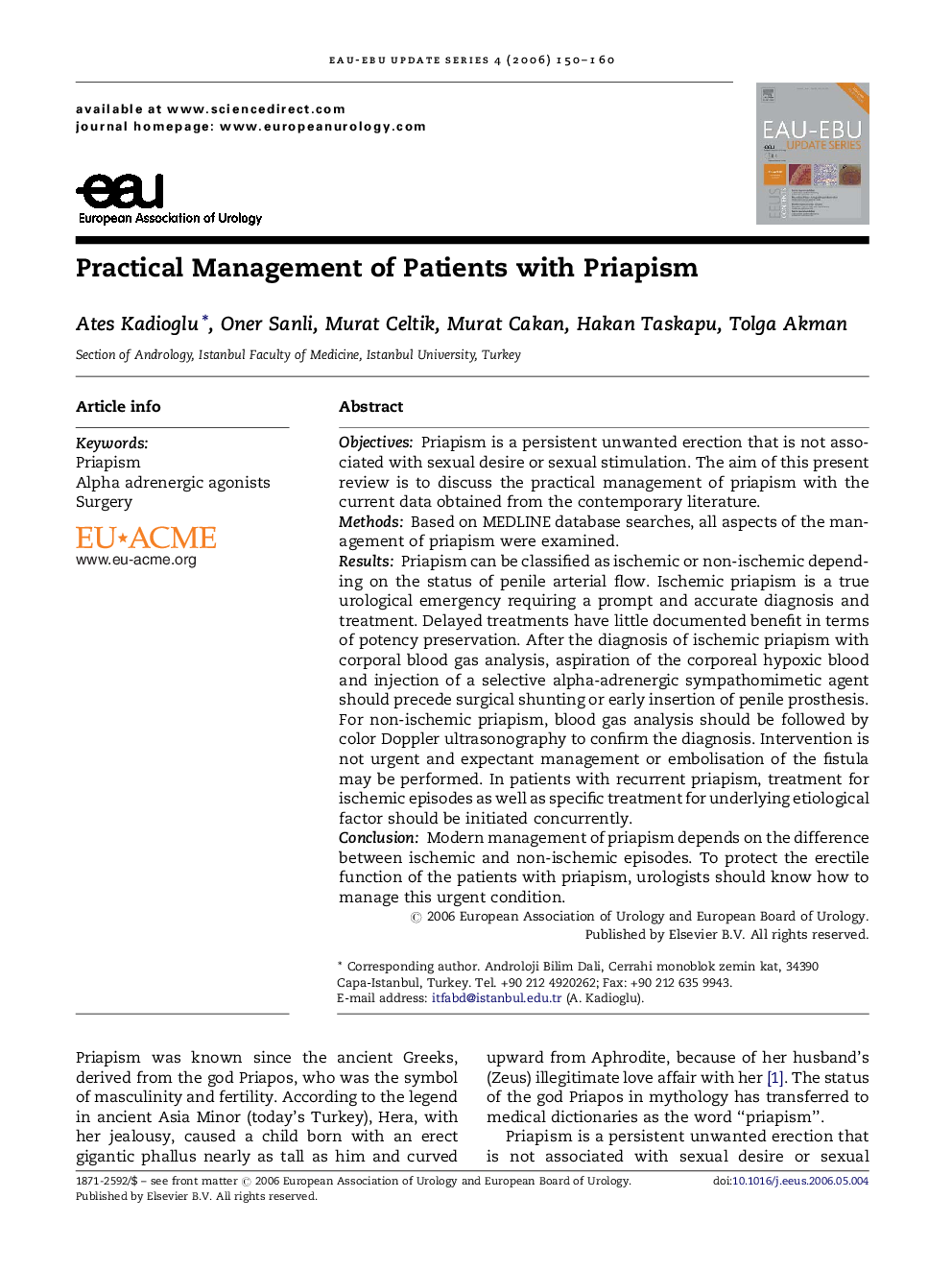| Article ID | Journal | Published Year | Pages | File Type |
|---|---|---|---|---|
| 3918791 | EAU-EBU Update Series | 2006 | 11 Pages |
ObjectivesPriapism is a persistent unwanted erection that is not associated with sexual desire or sexual stimulation. The aim of this present review is to discuss the practical management of priapism with the current data obtained from the contemporary literature.MethodsBased on MEDLINE database searches, all aspects of the management of priapism were examined.ResultsPriapism can be classified as ischemic or non-ischemic depending on the status of penile arterial flow. Ischemic priapism is a true urological emergency requiring a prompt and accurate diagnosis and treatment. Delayed treatments have little documented benefit in terms of potency preservation. After the diagnosis of ischemic priapism with corporal blood gas analysis, aspiration of the corporeal hypoxic blood and injection of a selective alpha-adrenergic sympathomimetic agent should precede surgical shunting or early insertion of penile prosthesis. For non-ischemic priapism, blood gas analysis should be followed by color Doppler ultrasonography to confirm the diagnosis. Intervention is not urgent and expectant management or embolisation of the fistula may be performed. In patients with recurrent priapism, treatment for ischemic episodes as well as specific treatment for underlying etiological factor should be initiated concurrently.ConclusionModern management of priapism depends on the difference between ischemic and non-ischemic episodes. To protect the erectile function of the patients with priapism, urologists should know how to manage this urgent condition.
